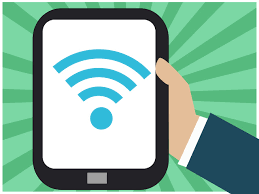Why Your Wi-Fi Sucks – And How to Fix It for Good
Slow, unreliable Wi-Fi is one of the most frustrating tech problems we deal with daily. Whether you're working from home, streaming your favorite show, or gaming online, a weak signal can ruin your experience.
But don’t worry—your Wi-Fi issues aren’t hopeless. In this guide, we’ll break down the most common reasons your Wi-Fi sucks and provide actionable fixes to get you back to blazing-fast speeds.
Common Reasons Your Wi-Fi Is Slow
Before diving into fixes, let’s identify the usual suspects behind poor Wi-Fi performance:
Router Placement Issues – Is your router hidden in a closet or behind furniture?
Outdated Hardware – Older routers can’t keep up with modern internet speeds.
Wi-Fi Interference – Too many devices or nearby networks clogging the airwaves.
ISP Throttling – Some providers slow down speeds during peak hours.
Weak Signal Range – Large homes or thick walls can kill Wi-Fi strength.
Now, let’s fix these problems—one by one.
1. Optimize Your Router Placement
Where you place your router has a huge impact on performance. Follow these best practices:
Central Location – Place it in the middle of your home for even coverage.
Elevate It – Keep it off the floor (on a shelf or table).
Avoid Obstructions – Keep it away from thick walls, metal objects, and appliances like microwaves.
Antenna Positioning – Angle them vertically for better horizontal coverage.
Pro Tip:
Use a Wi-Fi analyzer app (like NetSpot or Wi-Fi Analyzer) to find dead zones in your home.
2. Upgrade Your Router (If It’s Ancient)
If your router is more than 3-5 years old, it might be time for an upgrade. Newer models support:
✔ Faster speeds (Wi-Fi 6/6E)
✔ Better range (Mesh Wi-Fi systems)
✔ More simultaneous connections
Best Router Upgrades in 2024:
Budget Pick: TP-Link Archer AX55 (Wi-Fi 6)
Best for Large Homes: Google Nest Wi-Fi (Mesh System)
Gaming/Performance: ASUS RT-AX88U
3. Reduce Wi-Fi Interference
Your Wi-Fi signal competes with other devices and networks. Here’s how to minimize interference:
Switch to a Less Crowded Channel – Use your router’s admin panel to change from Auto to a less congested channel (e.g., 1, 6, or 11 for 2.4GHz).
Use 5GHz Instead of 2.4GHz – Less interference and faster speeds (but shorter range).
Keep Devices Away from Interference Sources – Cordless phones, baby monitors, and Bluetooth devices can disrupt signals.
4. Secure Your Wi-Fi from Bandwidth Hogs
If neighbors or unknown devices are leeching your Wi-Fi, your speed will suffer.
✅ Change Your Wi-Fi Password (Use WPA3 encryption if available)
✅ Enable MAC Address Filtering (Only allow trusted devices)
✅ Check Connected Devices (Kick off unauthorized users via your router settings)
5. Extend Your Wi-Fi Range
If certain areas still have weak signals, try these solutions:
Wi-Fi Extenders – Cheap but can cut speeds in half.
Mesh Wi-Fi Systems – Best for whole-home coverage (e.g., Eero, Netgear Orbi).
Powerline Adapters – Use electrical wiring to extend internet to dead zones.
6. Check for ISP Throttling
Sometimes, your Internet Service Provider (ISP) slows down your connection intentionally.
🔍 How to Test for Throttling:
Run a speed test (Speedtest.net) during different times of the day.
Use a VPN and test again—if speeds improve, your ISP may be throttling you.
If confirmed, contact your ISP or consider switching providers.
Final Checklist to Fix Your Wi-Fi for Good
To sum it up, follow this quick checklist:
✔ Reposition your router for optimal coverage.
✔ Upgrade your router if it’s outdated.
✔ Switch to 5GHz or a less congested channel.
✔ Secure your network from freeloaders.
✔ Extend coverage with a mesh system or extender.
✔ Test for ISP throttling and take action if needed.
Conclusion
Slow Wi-Fi doesn’t have to be a permanent headache. By optimizing your setup, upgrading hardware, and eliminating interference, you can enjoy fast, reliable internet in no time.











.jpeg)







0 Comments